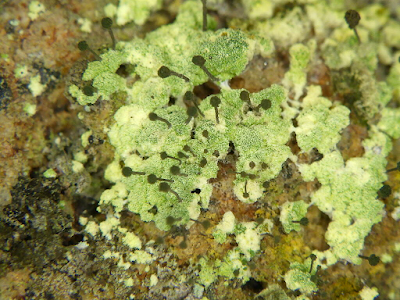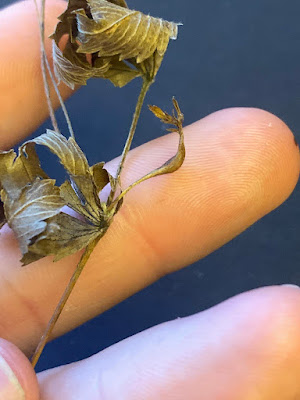Calicioid Fungi
One of the reason I am so fascinated with lichens is their extreme diversity. Lichens are diverse in their colors: red, yellow, orange, black, gray, green, brown, blue... Lichens are diverse in their form; crustose, foliose, and fruticose are the big three, but there is also leprose, squamulose, calicioid, placodoid, gelatinous, filamentous, cladoniform... Lichens are diverse in the substrates they grow on: rock, soil, bark, wood, lichens, fungi, resins, concrete, metal signs... Lichens are diverse in their ecosystem services: moisture retention, nitrogen fixation, medicinal uses, dyeing, weathering rocks, food source...
I could probably come up with a hundred lists showcasing the diversity of lichens. Today, my observations forced me to reflect on their phylogenetic diversity. The fungal-algae symbiotic relationship that we know as a lichen has independently evolved on multiple occasions. On the fungus side, it has developed in two of the main phyla, the Ascomycota and Basidiomycota. The vast majority of lichens are in the Ascomycota; again there is great diversity in the fungi that make up this including the following classes: Lecanoromycetes, Eurotiomycetes, Leotiomyctes, Dothideomycetes, and Arthoniomycetes. I know that the photobionts are also quite diverse and include both green and blue-green algae.
This thinking and research was brought about by seeing some calicioid lichens today. Commonly called pin/stubble lichens, many look essentially indistinguishable (at least to me). They are defined by the shape of their fruiting bodies which have a mazaedium that houses the spores. At first glance these lichens do not have much diversity, they all look the same and often grow in similar habitats. But, dig a little deeper and they are extremely diverse. These lichens are polyphyletic and not closely related, this structure has convergently evolved in many lineages. From my reading so far there are 3 main families: Coniocybaceae, Caliciaceae, and Sphinctrinaceae. Maybe there are other examples in other families as well. The calicioid fungi also have a surprising diversity of ecological function including some species that are lichenized as well as some that are non-lichenized. They can also be saprophytic and parasitic. They play out all these functions on quite a few substrates as well.
Today I saw three different examples of these lichens.
















Comments
Post a Comment